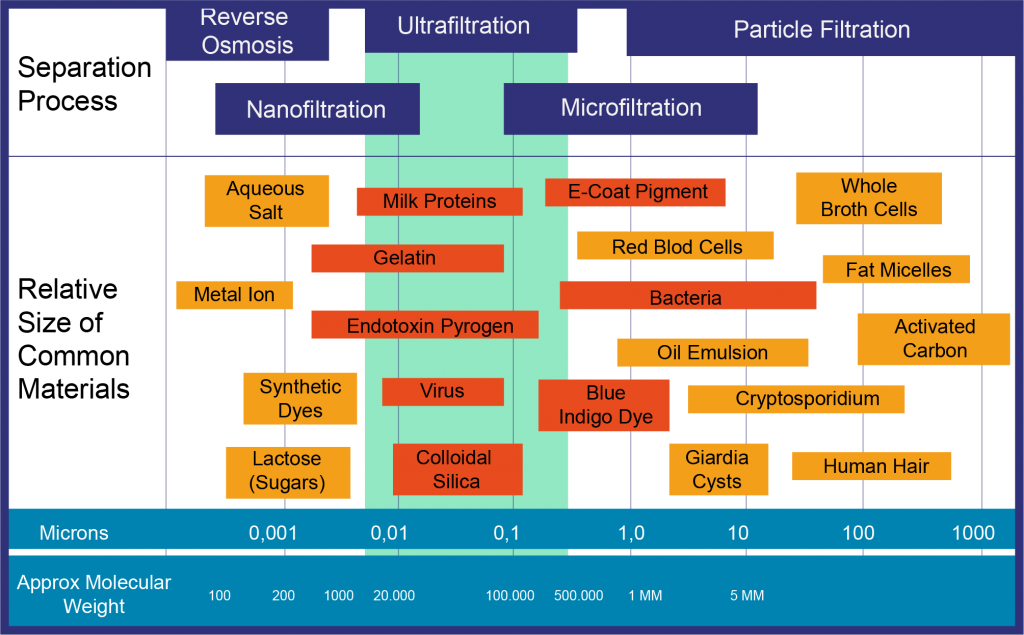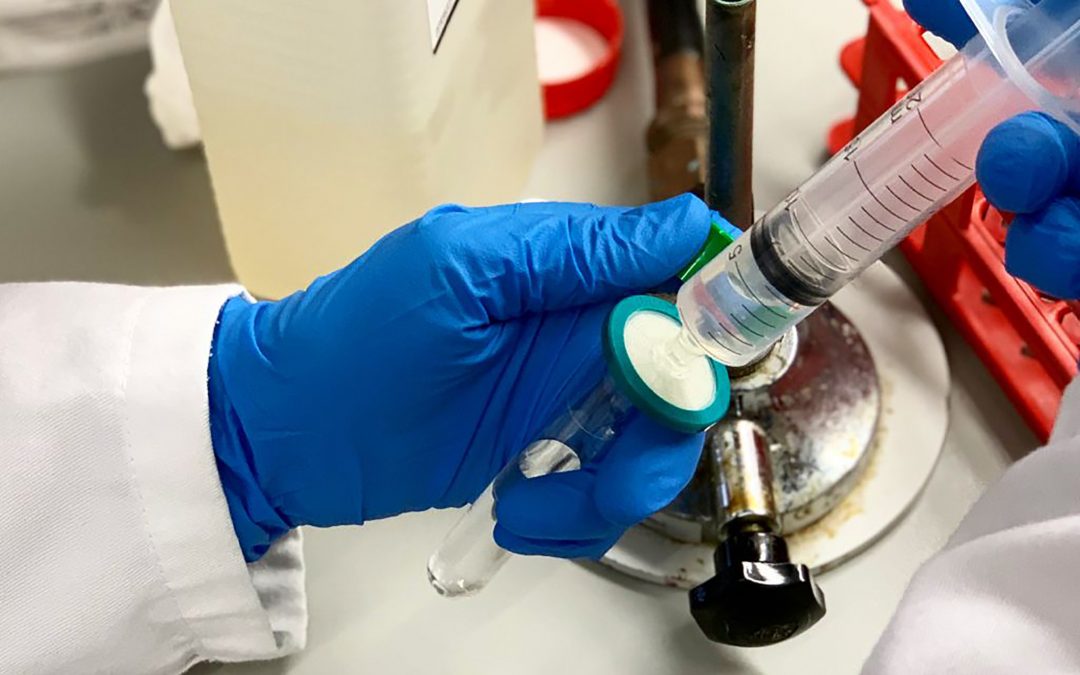What filters remove viruses from water? Learn about the most commonly used filters in the water industry to ensure proper water quality management based on virus control, which will increase the quality assurance of all filters better than bacteria.
Filters. There are two general categories of filters: depth and membrane.
Membrane filters separate by retaining particles larger than their pore size on the surface of the membrane.
Membrane processes include reverse osmosis (RO), nanofiltration (NF), ultrafiltration (UF) and microfiltration (MF). RO and NF retain all viruses. Ultrafiltration includes filters from 1 nm to 100 nm and retain viruses depending on their size. Somatic coliphages sizes range from 25 nm to 200 nm. Microfiltration, 0.1 µm – 10 µm, does not retain most of the viruses by size exclusion. Viruses frequently are found in water as aggregates or adsorbed to particles. In this case, their retention depends on the size of the particles.
Depth filters are the variety of filters that use a porous filtration medium (fibers and globular (i.e. sand, diatoms earth) material, or both to retain particles throughout the filter, rather than just on the surface. Due to the tortuous and channel-like nature of the filtration medium, the particles are retained throughout the medium within its structure. These filters are commonly used when the fluid to be filtered contains a high load of particles because, relative to other types of filters, they can retain a large mass of particles before becoming clogged. It is difficult to provide a size exclusion dimension for handmade filters, as for example, sand filters used in potabilization or water reclamation facilities, but some commercial compact depth filters indicate and guarantee the sizes excluded.

Worthy details. Filters also retain viruses by adsorption, which depends on the composition of the filter, the viruses themselves and the watery suspension medium characteristics (pH, ionic strength, presence of certain ions, etc.). Adsorbed viruses can be eluted (de-adsorbed) by changing water conditions.
Particulate and diluted organic material also adsorb to filters causing clogging. This lowers the efficiency of filtration (flux going through) and diminishes the size of the pores. Therefore, a clogged filter retains more viruses than a non-clogged one.
Nominal pore size is a value that is not exact, pores sizes of a given membrane follow a normal distribution, and a fraction of viruses greater than the nominal pore size can go through.
Practical aspects
Membrane and depth filters are utilized to remove viruses from water. Only RO and NF guarantee the full removal of viruses. A fraction of some of the smallest viruses (enteroviruses) and phages (F-specific phages and somatic coliphages of the Microviridae family, i.e.øX174) with sizes around 25 nm are only partially removed by ultrafilter membranes most frequently used in the water industry.
Surveillance and quality testing based on virus control allow to increase quality assurance of all filters better than bacteria. Bluephage recommends the use of coliphage in general for the control of efficacy filters. Bacteriophage MS2, which is a F-specific coliphage is recommended in some USA states for demonstration of particle removal by filters and for verification of membrane integrity.
Learn more about how Bluephage can help you perform microbiological water testing quickly, safely, and efficiently.


